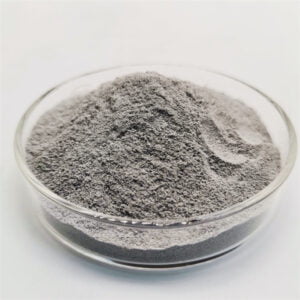技術者のための耐火金属粉末ガイド
目次
耐火金属粉 enable additive manufacturing of extremely heat resistant alloys unmatched by other materials. This guide covers refractory powder compositions, particle specifications, properties data, pricing, and comparisons to inform procurement decisions.
Introduction to Refractory Metal Powders
Key capabilities offered by refractory powders include:
- Withstand extremely high temperatures
- Retain high strength at temperature extremes
- Resist creep deformation and cracking
Common alloys used are:
- Tungsten heavy alloys like W-Ni-Cu
- Molybdenum TZM alloy
- Tantalum powders
This guide provides considerations when selecting refractory powders:
- 合金組成と製造方法
- 機械的特性試験データ
- 粒度分布に関する推奨事項
- Morphology, Density and Flow Characteristics
- Pricing Estimates Based on Order Volumes
- Oxidation and Corrosion Resistance Comparisons
- Pros vs Cons Relative to Solid Forms
- 印刷パラメータの最適化に関するFAQ

Refractory Metal Powder Compositions
表1 shows refractory metal powder compositions by primary elemental additions with some variation depending on alloy variant:
| 合金 | 主な合金元素 |
|---|---|
| タングステン重合金 | W, Ni, Cu, Fe |
| モリブデン TZM | Mo、Ti、Zr |
| タンタル | タ |
Small additions of carbon, potassium, silicon and boron also stabilize microstructures and grain sizes tailored for high temperature creep resistance depending on operating conditions.
機械的特性と試験方法
表2 shows typical minimum mechanical properties met by refractory metal powder alloys, with actual values varying based on build geometry, post-processing, and heat treatment:
| 合金 | 密度 | **Tensile Strength ** | 試験方法 |
|---|---|---|---|
| タングステン重合金 | 18 g/cc | 550 MPa | ASTM E8 |
| モリブデン TZM | 10.2 g/cc | 485 MPa | ASTM E8 |
| タンタル | 16.6 g/cc | 207 MPa | ASTM E8 |
Carefully validate delivered powder lot properties against certifications through sampling to ensure consistency.
Refractory Metal Particle Size Recommendations
表3 shows common particle size distributions used for quality refractory powders:
| サイズ範囲 | 典型的なメッシュ | 一般的な印刷範囲 |
|---|---|---|
| ファイン | -325メッシュ | 15-45ミクロン |
| スタンダード | -100メッシュ | 149 microns |
| 粗目 | -60 +100 mesh | 250 microns |
Other important powder characteristics:
- 球状粒子形態
- Good flow rates exceeding 30s hall funnel time
- Apparent density within 5% of true density
- Low oxygen and moisture content
Balance high powder flowability against print resolution needs through particle size selection and distribution.
Powder Morphology, Density and Flow Properties
表4 compares powder characteristics between general quality levels that impact print process robustness:
| パラメータ | High Quality Powder | エントリーレベルのパウダー |
|---|---|---|
| 形態学 | 球形度が高い | ギザギザ、不規則 |
| 流量 | Hall flow > 35s for 50g | ホールフロー < 25s for 50g |
| 見かけ密度 | > 90% 真密度 | しばしば<80%真密度 |
| 含水率 | <0.01% | >0.02% |
Poor powder properties require extensive parameter adjustments to achieve print quality, reducing productivity.
Refractory Metal Powder Pricing
表5 outlines rough refractory powder pricing under normal market conditions:
| 注文量 | 価格見積もり |
|---|---|
| 10キロ | $450+/kg |
| 100キロ | $275+/kg |
| 500キロ以上 | $200+/kg |
| 1000キロ以上 | サブキー割引 |
- Premium alloys command higher baseline pricing
- Bulk orders beyond 500 kg enable >40% price reductions
- Actual market prices tied to commodity indexes
- Carefully validate true yields vs usable fractions from suppliers
Oxidation and Corrosion Resistance Properties
耐火金属粉 offer extremely high melting points and stability in oxidizing environments:
表6
| 合金 | 融点 | 耐酸化性 |
|---|---|---|
| タングステン重合金 | 1400°C | 素晴らしい |
| モリブデン TZM | 2600°C | 素晴らしい |
| タンタル | 2996℃ | エクストリーム |
Properties derive from high chromium, aluminum and silicon content creating tenacious oxide barriers preventing material loss even at extreme temperatures nearing melting points.
Pros vs Cons: Powder vs Solid Forms
表7
| メリット | デメリット | |
|---|---|---|
| 耐火金属粉 | 複雑な形状 | より高いコスト |
| 優れた高温強度 | 後処理 | |
| 軽量化 | パラメータの最適化 | |
| Refractory Metal Solid | 低コスト | 形状制限 |
| 空室状況 | 非常に重い | |
| 加工性 | 材料廃棄物 |
In general, refractory powders justify premiums for low volume complex components where thermal resistance is vital. Standard mill product forms offer affordability for simple shapes in high quantities.
Combining supply forms strategically reduces overall program costs.

よくあるご質問
表8 - よくある質問
| よくあるご質問 | 答え |
|---|---|
| テストレポートを見直すべきか? | Yes, validate certification data indicates powder quality |
| What size powder particles should I use? | 15-45 microns balances resolution and flow |
| What impacts consistency? | Production method affects variability – vacuum melted is best |
| How much should I buy initially? | Start small, buy more once process is validated |
表9 - アプリケーションに焦点を当てたアドバイス
| よくあるご質問 | 答え |
|---|---|
| How do I optimize for rocket nozzle components? | Use extra fine <10 micron W or Mo powders to print sub 2mm channels |
| Which post processing approach lowers porosity? | Hot isostatic pressing with inert atmosphere protects against oxidation |
| Which refractory alloy maximizes creep resistance? | Consider additions of potassium, silicon and boron in tungsten heavy alloys based on operating temperatures |
| How should I adjust parameters for ultra fine feature resolution? | Slow down scan speeds, increase hatch spacing, use smallest layer thicknesses machine allows |
シェアする
MET3DP Technology Co., LTDは、中国青島に本社を置く積層造形ソリューションのリーディングプロバイダーです。弊社は3Dプリンティング装置と工業用途の高性能金属粉末を専門としています。
関連記事
Met3DPについて
最新情報
製品

3Dプリンティングと積層造形用金属粉末
















